The 2018 NOAA undergraduate scholars recently completed their summer internships at NOAA facilities across the country. Now, it’s their turn to tell the world about life as a NOAA scholar! Journey with us as these scholars take over our social media channels to share highlights from their research experiences. Check back throughout the 2020 application season for new posts on this #TakeoverTuesday collection.
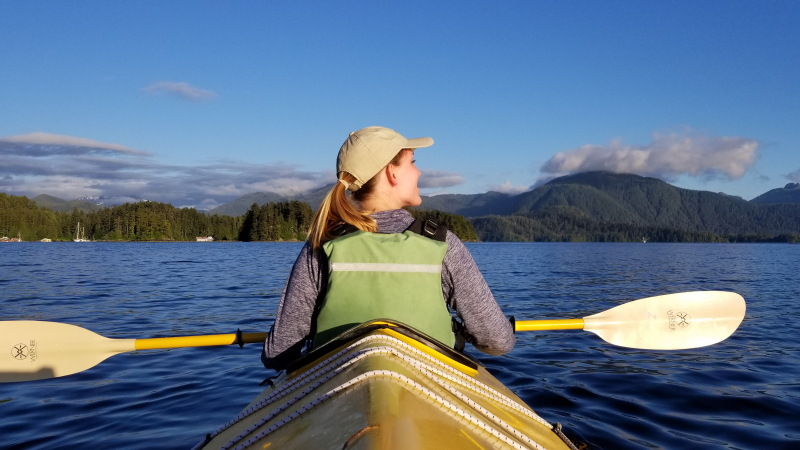
Ernest F. Hollings undergraduate scholars and Educational Partnership Program with Minority Serving Institutions (EPP/MSI) undergraduate scholars choose an opportunity at a NOAA facility for a 10-week summer internship. Learn about our scholarships through the eyes of our scholars as they share personal accounts from their research with NOAA.
Applications are open from September 1, 2019, through January 31, 2020. For more information and to apply, please visit the Hollings and EPP/MSI Undergraduate Scholarship frequently asked questions. Stay up to date with scholarship news by following NOAA Education on Facebook, Instagram, and Twitter.
January 2020
Daniel Hueholt
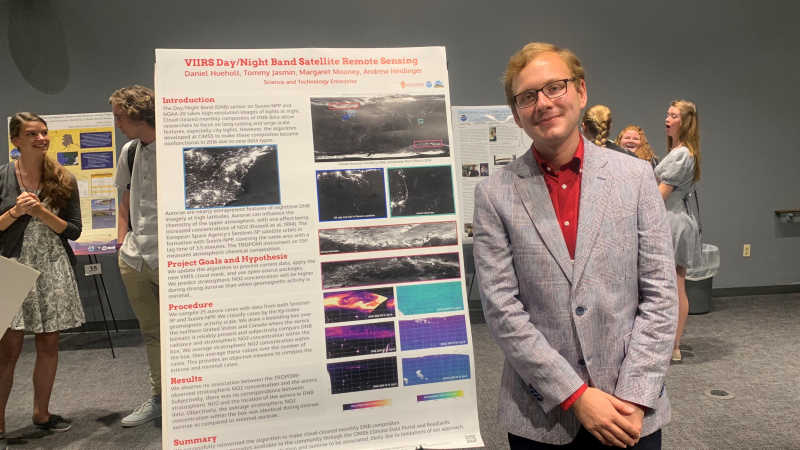
My name is Daniel Hueholt and I am part of the NOAA Hollings Scholarship class of 2018. I am a double major in meteorology and pure mathematics at North Carolina State University, and expect to graduate in May 2020. At NC State, I perform undergraduate research on winter storms. While I love this area of research, when I chose my Hollings internship, I knew I wanted to work on something completely different. I chose the NESDIS and the Cooperative Institute for Meteorological Satellite Studies (CIMSS) “VIIRS Day/Night Band Satellite Remote Sensing” internship to gain experience working with satellite datasets at the “birthplace of satellite research.” Additionally, the midwest was a part of the country that I had never visited, and UW-Madison an institution I was interested in for graduate school.
My summer project was a great fit for me. The Day/Night Band (DNB) sensor is designed to take high-resolution, highly-sensitive images of light sources on Earth at night. CIMSS had a defunct algorithm to stitch a month’s worth of images together, remove the clouds, and produce a single image for each showing only the anthropogenic light sources, produced by sources like urban centers, ships, and oil platforms. My project was to revive this algorithm, rewrite it to use open-source software, and automate the process to make generating the new images as easy as possible. I successfully completed these project goals, and also started the process of uploading the new images to the SSEC RealEarth offsite link page. These images are now publicly available through the web interface.
The people I worked with were also great — Tommy Jasmin and Margaret Mooney, in particular, went far beyond the call of duty to make me feel welcome! Additionally, I loved the Madison area. Through CIMSS, I participated in some events with the CIMSS Student Workshop, such as a day trip to Devil’s Lake State Park. Overall, I had a great time on this internship, and would highly recommend this program to any future undergraduate!
Sydney Lybrand
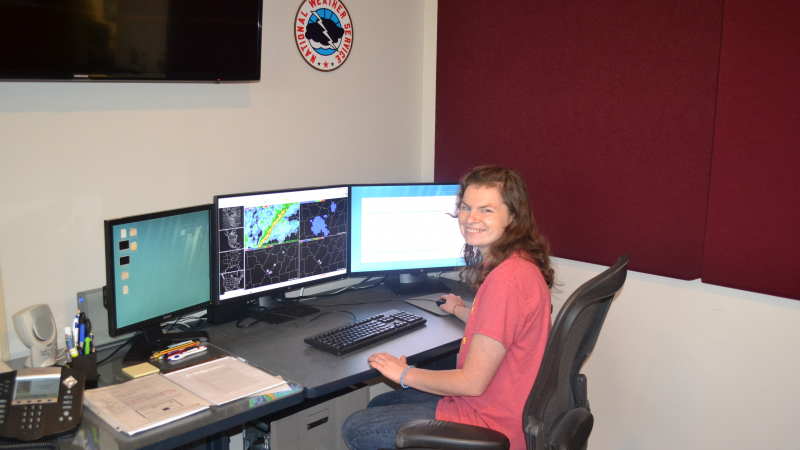
Hi, y'all! My name is Sydney, and my Hollings internship was at the National Weather Service Weather Forecast Office in Huntsville, Alabama. I really enjoyed my internship. Through the support of my mentors and the wonderful Hollings Scholarship staff, I was able to have a wonderful summer that will benefit me for years to come! During my Hollings internship, I looked at Geostationary Lightning Mapper (GLM) data and the correlation between lightning "jumps" and tornadoes using the GLM. Since GLM data is fairly new, there were a few speed bumps along the way; however, the project ended with very useful results. Believe in yourself and apply! The Hollings Program is one of the best things that has ever happened to me! You can do this!
Lily Olmo
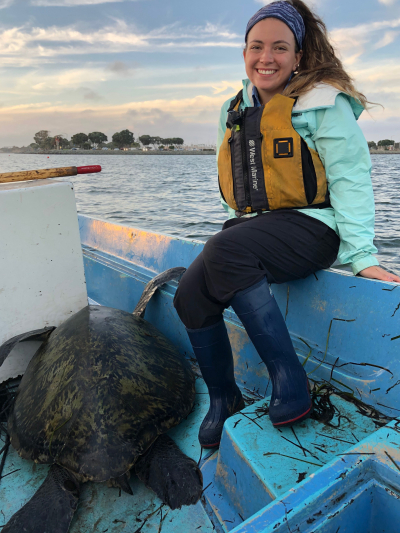
My name is Lily Olmo and I am a 2018 Hollings scholar from the University of North Carolina at Chapel Hill, where I study environmental and marine sciences. I have been fascinated by sea turtles since I was young, so it’s no surprise that I ended up working with the Marine Turtle Ecology and Assessment Program at NOAA’s Southwest Fisheries Science Center in La Jolla, California. As part of this program, I was able to assist in a long-term study of the green sea turtle population in San Diego Bay during evening surveys.
Aside from fieldwork, I frequently visited La Jolla Cove, a popular tourist destination within a southern California marine protected area. There I spent my time interviewing residents, tourists, and businesses to better understand the economic benefits of guided wildlife ecotourism. I was even able to go snorkeling with sea turtles, leopard sharks, and kelp bass while I was there. I am very thankful for the NOAA Hollings Scholarship Program for allowing me to connect with many amazing researchers and for enabling me to follow my passion for environmental conservation.
Andrew Tokuda
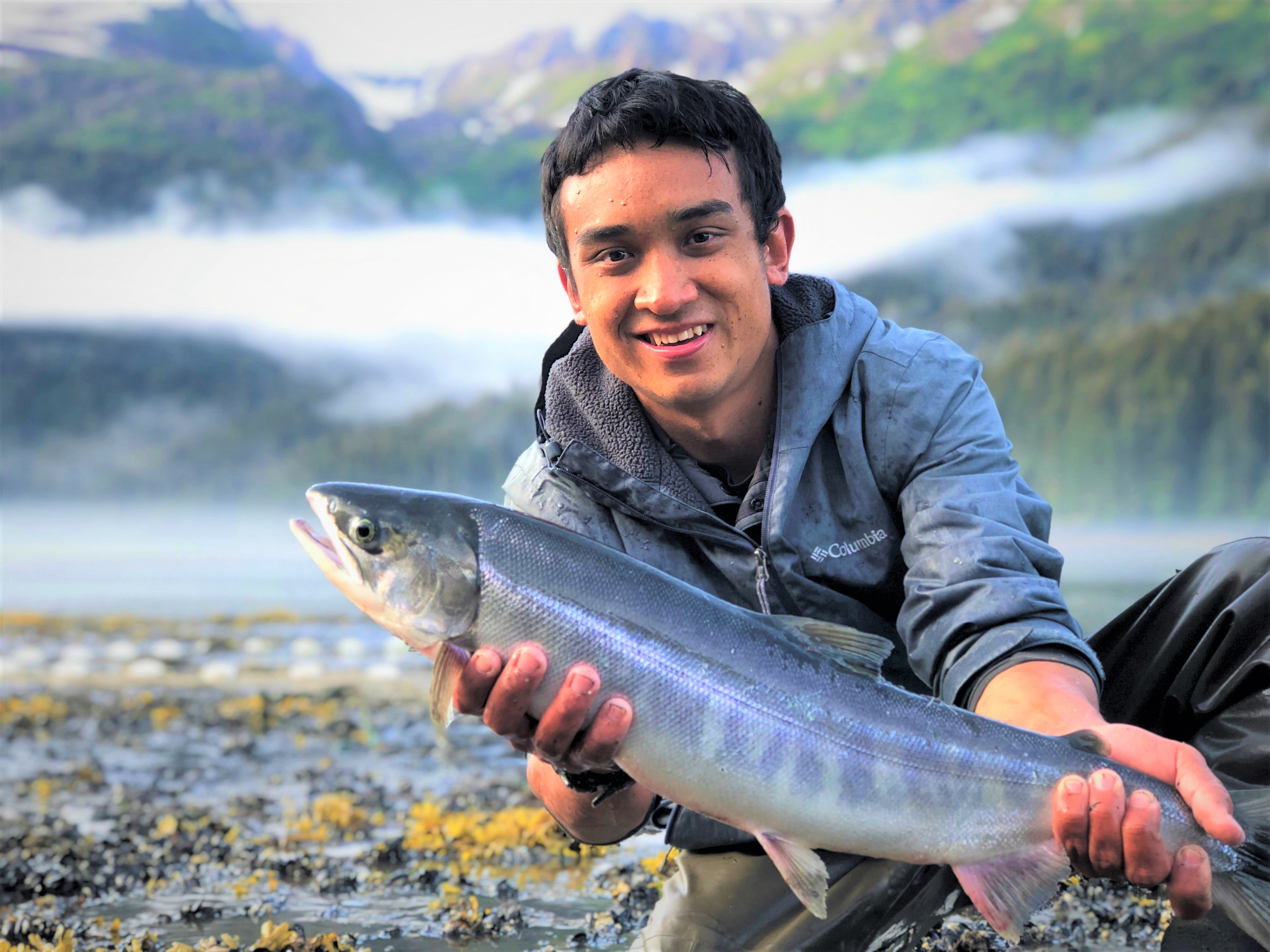
Hi everyone, I’m Andrew Tokuda, a 2018 NOAA Hollings scholar. I always wanted to conduct fish-related research in Alaska because at least where I am from in Hawaiʻi, the habitat is the polar opposite and as a fishing enthusiast, I also have a passion for learning more about creating effective fishing regulations — what Alaska is well-known for. Since I also aspire to join the U.S Army as an active-duty officer with the dream of improving the dialogue between the military and environmental sciences, I wanted an internship that would encompass both terrestrial and marine environments. Upon further research, I found that the Kachemak Bay National Estuarine Research Reserve offsite link in Homer, Alaska, would be a perfect fit for my Hollings summer internship! Along with my mentors, I characterized riparian prey availability for juvenile salmon in the Anchor River estuary on the Kenai Peninsula. By building traps that collected terrestrial prey while simultaneously examining salmon stomach contents, we learned more about terrestrial prey composition and how different environmental parameters can potentially affect salmons’ preference of going after terrestrial prey over aquatic prey and vise versa. I was personally surprised to discover how estuaries play such a critical role in the life-cycles of Alaskan fish, many of which are commercially valuable. What made my experience in Alaska truly unique was also the fact that I got to participate in other researchers’ projects in a variety of scientific areas which painted an overall picture of the ongoing research done at Kachemak Bay. Overall, I am beyond grateful to have been able to work with a family of such passionate and knowledgeable researchers, as well as being able to socialize with the local community, and further realizing that both had a common mindset of taking care of the environment for future generations.
Eliza Mills
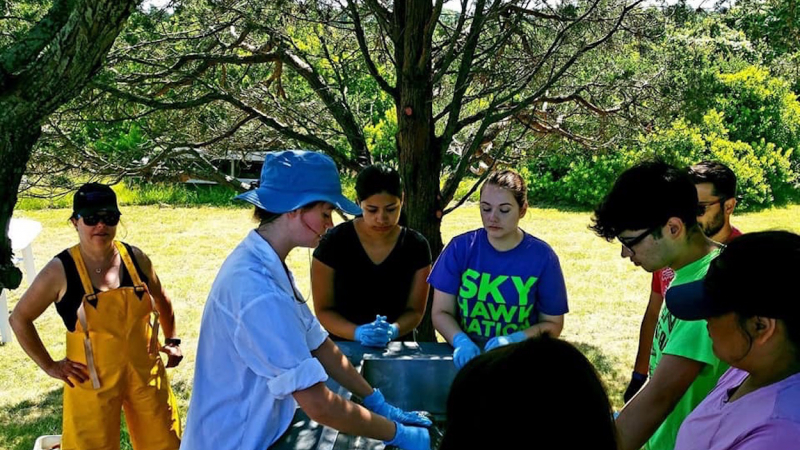
Hi everyone! My name is Eliza Mills and I’m here to express the unique opportunity I had as a 2018 NOAA Hollings scholar. This past summer I worked in the Protected Species Branch at the NOAA Northeast Fisheries Science Center (NEFSC) in Woods Hole, Massachusetts. My project focused on examining and identifying the stomach contents of Gray (Halichoerus grypus atlantica) and Harp seals (Pagophilus groenlandicus) accidentally killed in commercial fisheries off the northeast U.S. from 2007 to 2019. I was able to identify multiple fish and cephalopod skeletal structures in the stomach contents: otoliths (fish ear bones), jaws, and cephalopod beaks. I also had the opportunity to conduct necropsies on multiple seal species at Woods Hole Oceanographic Institute offsite link (WHOI). Here, I’m teaching a Harbor seal necropsy to a marine mammal class at the UMass Boston Nantucket Field Station! While my project lasted one summer, longer term diet studies can provide opportunities to understand how seals may be interacting with fishing gear and can address wider ecological questions. This hands-on research experience with marine mammals has further inspired me to pursue higher education and study marine megafauna in the future. I’m very thankful for the opportunity the Hollings scholarship has given me to conduct undergraduate research and I implore anyone eligible to apply for this program!
Hannah Brady
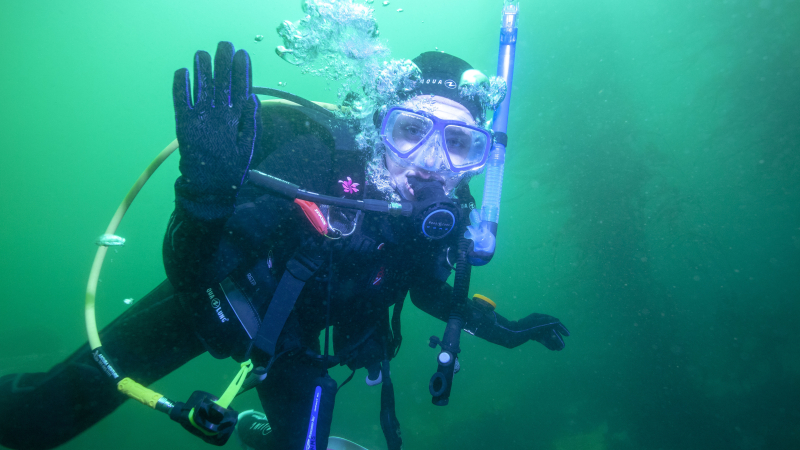
Hi! My name is Hannah Brady, and I am a senior marine biology student at Texas A&M University — Corpus Christi. I spent last summer in Monterey Bay, California, at the National Marine Sanctuary under the mentorship of Dr. Steve Lonhart. I absolutely love going out in the ocean and encouraging other people to experience it as well. That’s why last summer I was ecstatic to work on an underwater virtual reality project that allows people to see a view of the world they may never get to witness themselves. During this project, I learned new computer software and went diving with NOAA scientific divers to take pre-construction photos of the Monterey Bay Aquarium intake pipe. As a result, underwater virtual reality images I created were placed on the NOAA sanctuary website. My mentor also encouraged me to explore opportunities beyond my main project, which led to me going on a day-long research cruise and attending dive training for underwater fish and invertebrate surveys. This internship was an absolutely incredible learning experience and a lot of fun. I hope y’all apply for this program and wish you good luck!
Delaena Stephens
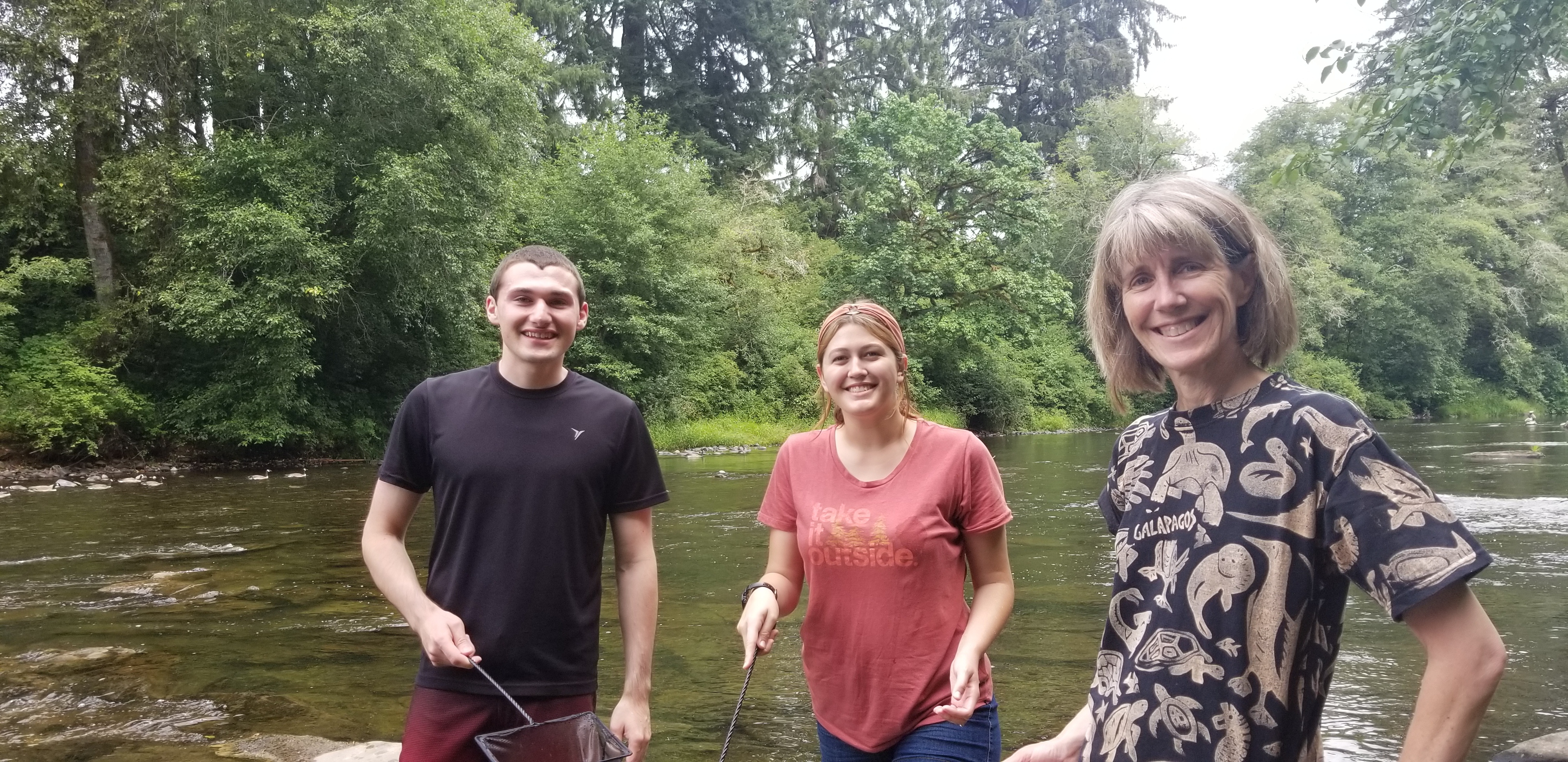
Hi, I’m Delaena Stephens, a 2018 Educational Partnership Program with Minority Serving Institutions (EPP/MSI) undergraduate scholar and biology major at the University of La Verne. This summer I interned with NOAA Fisheries at Hatfield Marine Science Center in Newport, Oregon. Working with my mentor, Kym Jacobson, I spent my summer examining juvenile Chinook salmon intestines and stomachs for trophically transmitted parasites. These parasites can tell us about the diet and behavior of these endangered fish, giving us a better idea of how to protect them and increase salmon returns. In February 2020, I’ll have the opportunity to present this research at the ASLO Ocean Sciences meeting in San Diego! The EPP/MSI undergraduate scholarship program has provided me with a fantastic network of interns and NOAA scientists and has been an incredible learning experience. I hope you consider applying for a NOAA internship!
Grace O'Malley
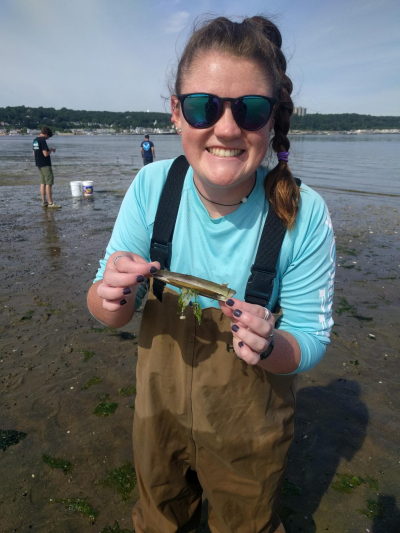
Hi everyone! My name is Grace O’Malley, and I’m a biology major from Allegheny College. During the summer of 2019, I interned at the James J. Howard Marine Science Laboratory in Sandy Hook, New Jersey. My project focused on observing the effects of elevated carbon dioxide on the development of Atlantic silverside, an important forage fish. I was able to use cutting-edge techniques and learn how to use scientific equipment that I would’ve never had the opportunity to use otherwise. While there were stressful times over the course of the summer, I was reassured in my passion for scientific research. During my time at the lab, I was able to meet some incredible scientists and make life-long connections with principal investigators, lab technicians, and the interns I spent my time with. The Hollings Program gave me the opportunity to not only conduct and present cutting-edge research but grow as a scientist and help me determine my career path post-graduation from college.
December 2019
Haley Capone
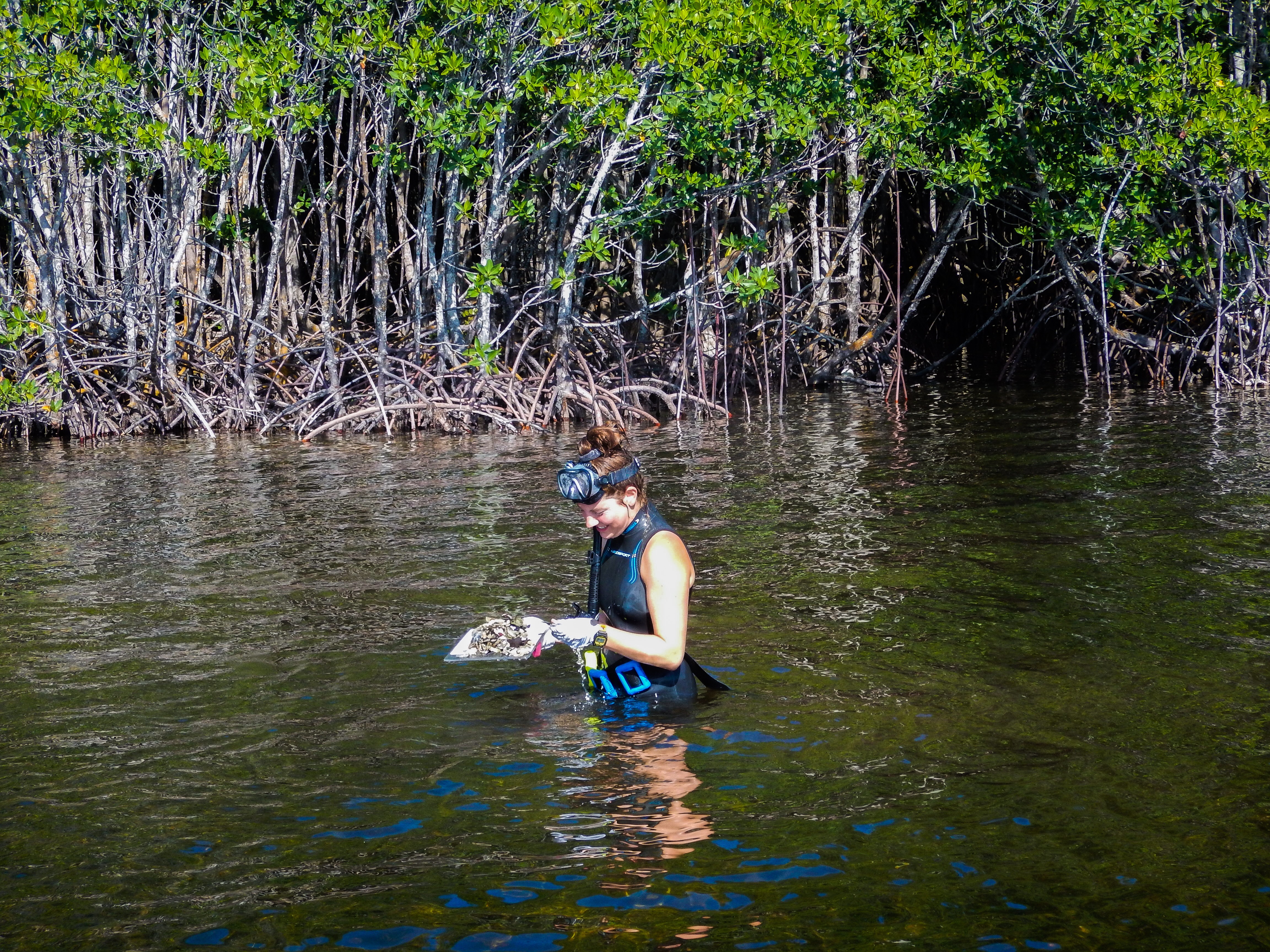
Hello and happy holidays! My name is Haley Capone, a 2018 NOAA Hollings scholar attending the University of Illinois at Urbana-Champaign studying natural resources and environmental sciences. This summer, I had the opportunity to work with NOAA’s Southeast Fisheries Science Center in Key Biscayne, Florida. I also explored Florida’s Biscayne National Park, more specifically, one of the world’s most precious yet periled ecosystems — the mangrove forests. These estuarine environments are home to a diverse array of intertidal organisms including sponges, crabs, fishes, and mollusks. They also provide us with valuable ecosystem services such as food security from available nursery habitat, awe-inspiring recreation, and coastal protection through their dense root systems, which hold and trap sediments, preventing storm surge erosion. My internship placed me on the NOAA Polar, a small research boat, where I sampled for relic oyster shells using quadrats along Biscayne Bay’s mangrove shoreline. This research was conducted to help further the knowledge and understanding of the spatial distribution and abundance of oyster species within the bay.
I was interested in this project not only due to its integrative inclination, combining both mapping software GIS and R, a statistical analysis software, but also because of the strong management implications it possessed as well. Oysters are not solely of commercial importance to the East Coast, but also build and shape the Bay ecosystem through their filter-feeding ability, improving water quality, and forming hard substrate beds which serve as fish habitat. These very characteristics are what make them central figures to monitoring and conservation efforts. This internship has helped advance my professional career through self-guided research and presentation, as I look forward to a first publication for my on-campus research this spring. It has also encouraged me to explore graduate school for environmental statistics and conservation ecology. The NOAA Hollings Scholarship is a great opportunity, and I invite everyone eligible to apply!
Savannah Miller
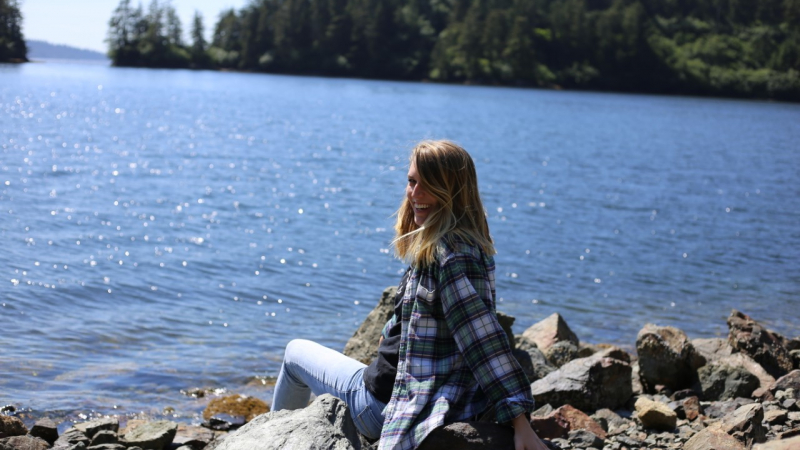
Hey there! My name is Savannah Miller and during the summer of 2019 I lived in Sitka, Alaska, and worked at the Sitka Tribe of Alaska's Environmental Research Lab (STAERL) for my NOAA Hollings internship. I am very passionate about the concept of “one health,” the interconnectedness of animal, human, and environmental health that calls for collaboration among a variety of disciplines. I was able to implement this concept during my summer internship as I did research on the impacts that paralytic shellfish poisoning has on local citizens and Native Alaskan health and its correlations to phytoplankton blooms. STAERL and Southeast Alaska Tribal Ocean Research (SEATOR) partners have an ongoing shellfish monitoring program offsite link that examines the incidence of biotoxin presence in representative regions of southeast Alaska. Shellfish samples are collected and tested for paralytic shellfish toxins, specifically saxitoxins, which cause paralytic shellfish poisoning offsite link (PSP). This issue has been a critical concern for the SEATOR partners who rely on shellfish as a subsistence resource.
Throughout the summer I tested shellfish samples for biotoxins and performed my own research project to create profiles of PSP for the SEATOR partners using three years of PSP data the tribe has collected. I am continuing to collaborate with the Sitka Tribe by writing my senior honors thesis on this topic as well as presenting my research at several conferences both on my university campus and across the country.
Outside of research, I learned so much about Native Alaskan history and culture, was able to take daily runs in a national forest, volunteered at the Alaska Raptor Center, and did tons of outdoor activities. Alaska is one of the most unique and beautiful places I have ever been to and I am extremely grateful for the opportunities the NOAA Hollings Scholarship provided me.
Savannah Weber
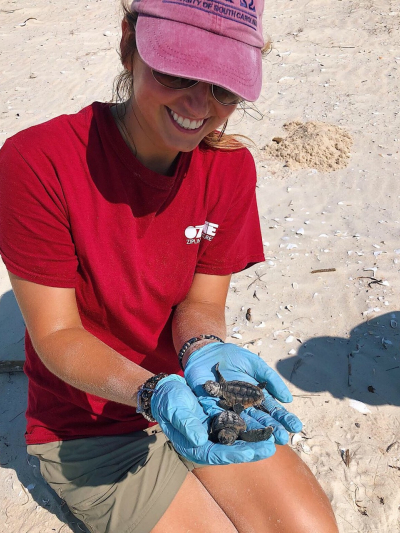
My name is Savannah Weber, and I completed my NOAA Hollings summer internship at the Apalachicola National Estuarine Research Reserve offsite link in Apalachicola, Florida! I chose this particular internship because I wanted to gain field work experience and assist with a variety of research projects. I helped my mentor conduct her sea turtle research on nest incubation temperatures and learned how to identify sea turtle tracks, locate egg clutches, and conduct hatch successes to determine the success of the nest. I also helped with fishery trawling, water nutrient sampling, data logger placement, oyster monitoring, and zooplankton collection and preservation. Ultimately, I chose to focus my Hollings project on the long-term fishery trawling monitoring project. By analyzing past data, I looked at the distribution and abundance of white shrimp in the Apalachicola Bay to understand how different environmental factors can affect a population. Besides assisting with so many different field work opportunities and networking with research scientists, one of my favorite parts of the internship experience was presenting at the NOAA Student Symposium at headquarters in Silver Spring, Maryland. Not only was it a unique experience to share my findings, but I gained a lot of insight on other ecological research projects that scientists are doing all over the country! I absolutely loved every second of the internship. Thanks to the Hollings program, I now know without a doubt that I want to pursue a career in marine ecological research — and I now have the experience and skills to do it!
Nicholas Johnson
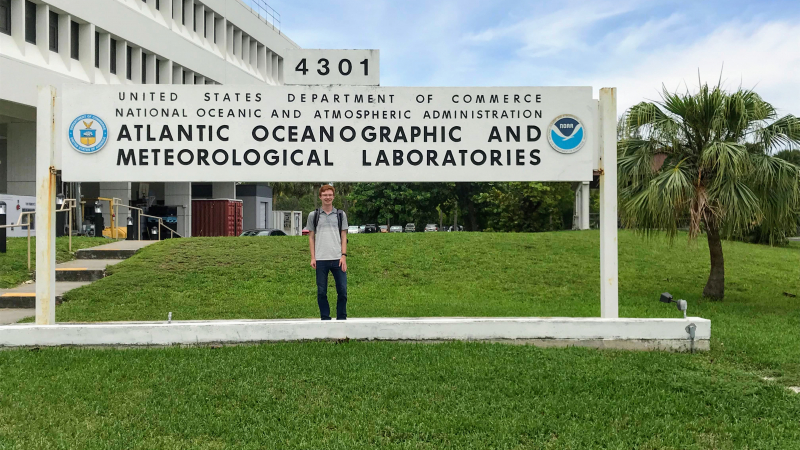
Hello everyone! I’m Nicholas Johnson, a 2018 NOAA Hollings scholar, here for #TakeoverTuesday. Last summer I had the opportunity to join scientists at the NOAA Atlantic Oceanographic and Meteorological Laboratory Hurricane Research Division in Miami, Florida, developing visualizations for data collected by the NOAA Hurricane Hunters. Each year during hurricane season, scientists fly aboard NOAA WP-3D aircraft into tropical cyclones for research and forecasting purposes. My summer project focused on developing visualizations for data collected by the various instruments on the aircraft which are used for enhancing our understanding of storm properties and provide better forecasts to the community. The highlight of my internship was being able to fly on one of the field program missions into Tropical Storm Barry. Watching the sunrise while soaring above the storm was one of the most breathtaking experiences in my life. This summer I gained the “hurricane fix,” and my experience has inspired me to continue researching tropical cyclones.
Amy Li
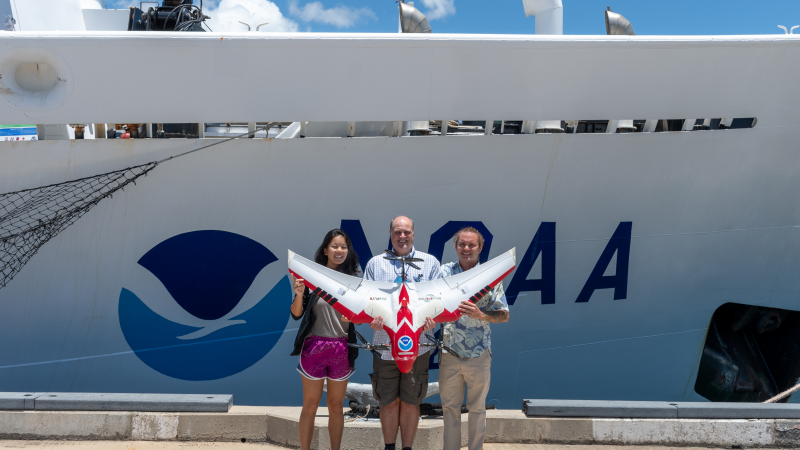
Hi there! I'm Amy Li, a 2018 Hollings scholar currently studying environmental science and public policy at Harvard University. For my internship, I worked at the NOAA Fisheries Pacific Islands Regional Office, looking at the application of Unmanned Aerial Systems for studying coral reefs. Our field site was Kaneohe Bay on the island of Oahu and one of my favorite parts of the internship was definitely the days spent doing fieldwork. Accessing our launch site entailed sailing out to the middle of the bay, anchoring on a sandbar, and preparing our drone for takeoff. Through my project, which utilized drone and other aerial imagery to map and study areas of coral bleaching, I learned remote sensing, image analysis, and GIS skills. Ultimately, I was able to quantify coral bleaching at larger and faster scales than traditional measurement methods. I also met so many amazing NOAA scientists and fellow interns who all contributed to an incredible summer. This experience helped broaden what I thought a career in science could be, as well as the interdisciplinary nature of the work NOAA does.
November 2019
Mark Haver
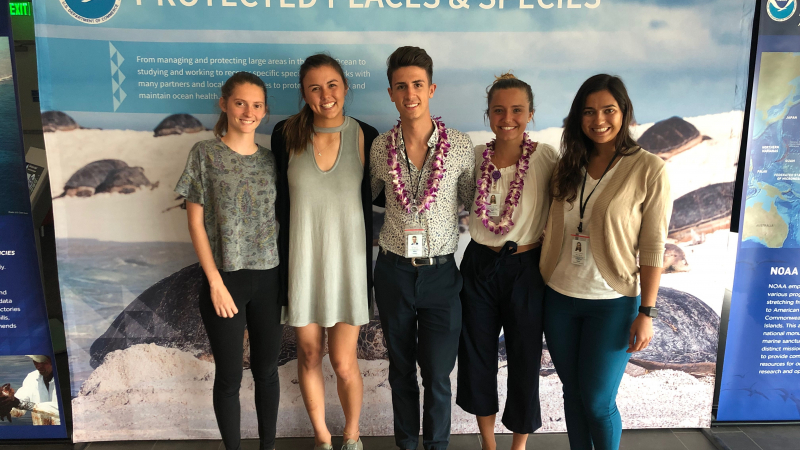
Aloha! My name is Mark Haver, and I am a NOAA Hollings scholar, class of 2018. My summer internship was spent in Honolulu, Hawaii, with the Papahanaumokuakea Marine National Monument. Here I am with fellow Hollings scholars Sarah Glover, Madison Pickett, Mia Silverberg, and Jen Magi on our very first day working at the Daniel K. Inouye Regional Center in Pearl Harbor. During my internship, I was able to share what makes Papahanaumokuakea so special with the public at events like World Ocean Day at Ko Olina Beach Park. Sharing my passion for protecting ocean biodiversity with others allowed them too to become impassioned. Beyond volunteer outreach events, I assisted in coordinating a communications plan for anniversaries related to the Monument in 2020: the 20th anniversary of the Northwestern Hawaiian Islands Coral Reef Ecosystem Reserve and the 10th anniversary of the Monument's UNESCO designation as a Mixed World Heritage Site. My favorite project of the summer was drafting a Sanctuaries Conservation Series paper on the viability of translocation as an effective conservation strategy for wildlife threatened by sea level rise. I have never experienced such fulfilling work in my life, and I am incredibly appreciative that the Hollings Scholarship was able to provide me with this incredible opportunity.
Stephanie Letourneau
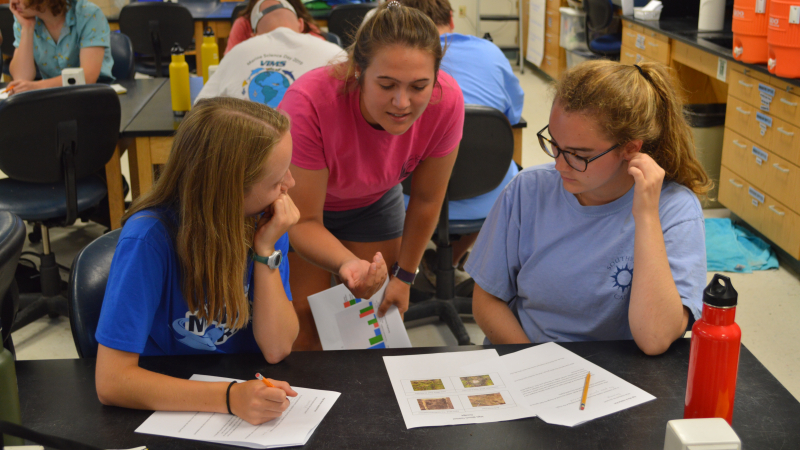
Hello! I’m Stephanie Letourneau, a 2018 Hollings scholar currently studying at Juniata College in Huntingdon, Pennsylvania. I had the opportunity to work at the Chesapeake Bay National Estuarine Research Reserve offsite link (CBNERR) on the campus of the Virginia Institute of Marine Science. This experience allowed me to explore my interests in research and outreach by working with both the education and the stewardship teams. For my project, “Digital vs. traditional learning: Mitigating marshes against sea level rise,” I created a lesson plan based on the current NERRs thin-layer placement project and made a digital version using ESRI story map. Then, I piloted both formats with students and received evaluations from teachers. My internship provided me new experiences in science education, field research and monitoring techniques in marshes, and a new understanding of the Chesapeake Bay ecosystem. I am continuing my work with CBNERR Virginia while I am at school, and I am excited to learn more about opportunities where I can pursue my passion to be a scientist who actively engages in education. Thank you so much to the Hollings Scholarship Program for helping me learn more about my career options!
Devin Robichaux
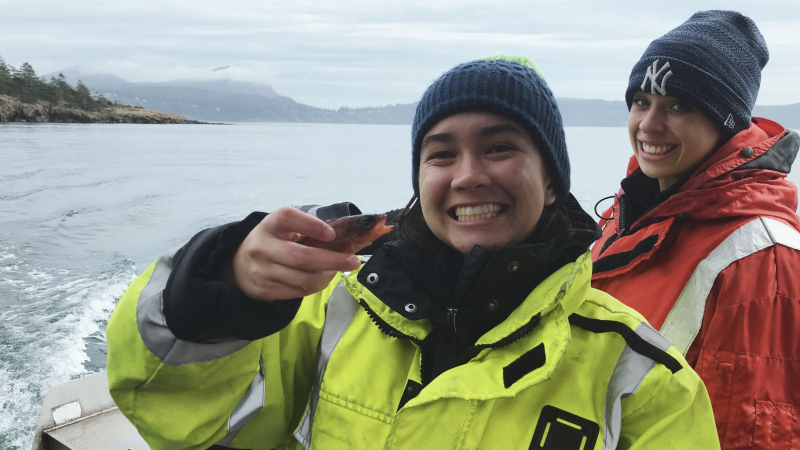
Hi! My name is Devin Robichaux and I am a member of the Ernest F. Hollings Scholarship class of 2018. I am currently a senior at Seattle University, studying civil and environmental engineering. I spent this past summer in Seattle, Washington, researching fall-run Chinook salmon and where they come from. These fish hatch in freshwater, spend up to four years at sea, and then migrate back to the same streams and rivers where they hatched to spawn as adults. A common approach for identifying the origin of salmon relies upon chemical tracers (i.e., isotopes) from the environment that are incorporated onto their otoliths, or “ear bones”. The abundance of certain isotopes differs among habitats and thus can be used as a ‘finger-print’ to tell where an individual resided. However, evidence exists that at hatching the isotope values in the otolith are influenced by the isotope value in the yolk-sac of a developing embryo, and not solely by the environment. The purpose of my research is to identify when in the life of a developing fish does its otolith acquire isotopes from the environment in order to accurately estimate where fall Chinook salmon hatch. This photo is of Emily Tolimieri and me collecting samples in the San Juan Islands.
Raien Emery

Hey there! My name is Raien Emery and I am a class of 2018 Hollings scholar. During the school year, I study environmental science at the University at Alabama and work in forest ecology research. However, this past summer I delved into the completely different culture of salmon research! I split my internship between coastal Oregon and Seattle, Washington, involved with each step of the research process. I spent the first month conducting field work on a fifty-foot boat catching and tagging salmon. I transitioned to lab work for the second half of the summer, preparing otoliths (small fish bones beneath the brain) and running samples through an inductively coupled plasma mass spectrometer. The ultimate goal of the project was to correlate ocean entry timing with growth of Pacific salmon, and having the chance to immediately present our results at the NOAA student symposium in D.C. was beyond gratifying. Along the way, I connected with incredible and inspiring people, interacted with news crews from Canadian Broadcasting and The Seattle Times, and experienced the Pacific Northwest from sea to city. This internship was an ideal opportunity to develop as both a scientist and a person. If I wasn’t sure research was for me before this internship, I definitely know it is now!
Annalise Guthrie
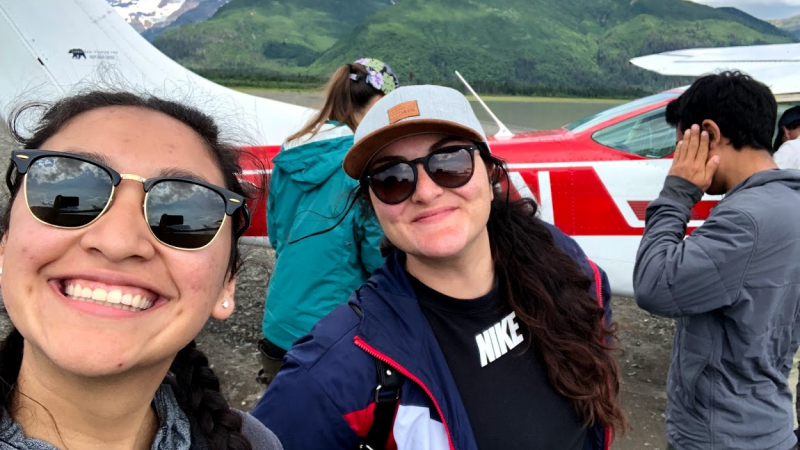
Osiyo and hello! My name is Annalise Guthrie (second from the right), class of 2018 EPP/MSI scholar and also a citizen of Cherokee Nation. As an indigenous person who also attends a tribal university (Haskell Indian Nations University in Lawrence, Kansas), it has always been a priority of mine to find ways to promote tribal resiliency within the field of environmental science. My second summer as a NOAA scholar, I got the opportunity to do just that while working with the Kachemak Bay National Estuarine Research Reserve in Homer, Alaska. The reserve is straight across the bay from the Seldovia Village Tribe. The Seldovia Village Tribe and the reserve wanted to collaborate more on environmental monitoring projects and create more educational opportunities for residents. I assisted in facilitating these efforts and created tools that would be helpful to new collaborations. Additionally, I assisted in harmful algal bloom and invasive species monitoring, clam surveys, and nearshore fish community research. Oh, and did I mention I took a ride on that really tiny plane to check out some grizzly bears? If you’re looking for an undergraduate scholarship, this is one you don’t want to pass up — applications are due January 31, 2020!
Carina Burroughs
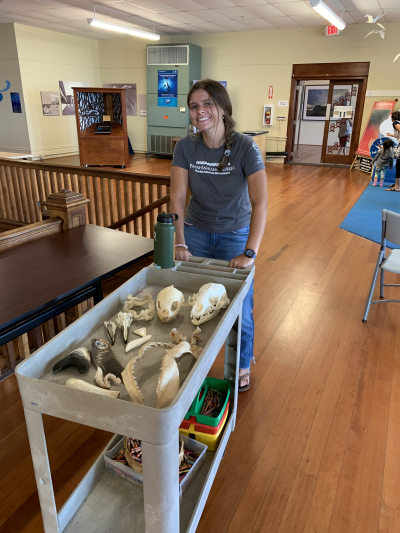
Hi! I’m Carina Burroughs, a NOAA Hollings scholar currently studying at the University of Miami. This summer, I worked as a Hollings intern for Papahānaumokuākea Marine National Monument in Hawaii, focusing on sharing the science and stories of the monument with the world. Working with the staff of Mokupāpapa Discovery Center in Hilo, I developed written and multimedia content distilling scientific information, illuminating threats to the monument ecosystems, and highlighting other important knowledge. I also developed a new curriculum for the education team and worked with visitors and school groups. My work this summer supported and expanded upon efforts to share the monument and foster public connection to Papahānaumokuākea. It also furthered my interest in connecting people outside of the scientific community to the field! Being a NOAA Hollings scholar has been an incredible opportunity, and I greatly encourage interested students to apply!
October 2019
Melissa Piper
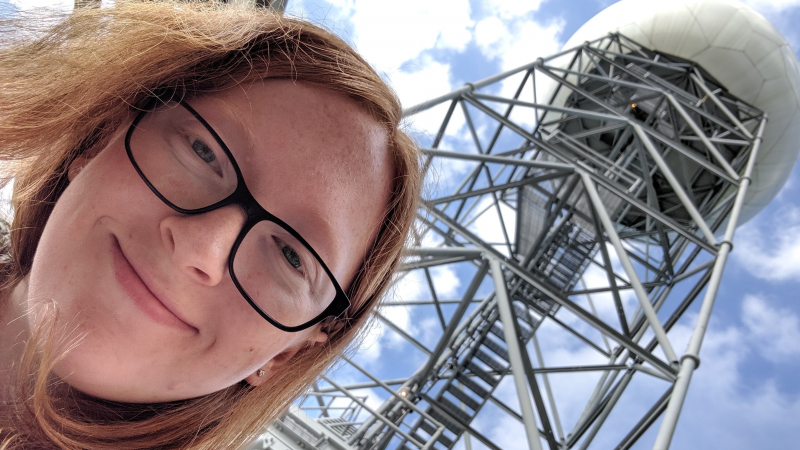
Hi, everyone! I’m Melissa Piper, a 2018 NOAA Hollings scholar and a senior in meteorology at Iowa State University. This past summer I conducted my internship at the National Weather Service (NWS) in Louisville, Kentucky, where I analyzed dual-pol digital precipitation rate data for heavy rainfall events in central Kentucky and southern Indiana to determine critical rainfall rates for flash flooding in vulnerable areas. To do this, I had to develop and enhance my skills in GIS and analyzing radar imagery. The skills I gained from my Hollings internship will help me greatly in graduate school and in my career!
My time at NWS Louisville wasn’t just work though, a lot of excitement was involved! Whenever there was a severe weather event, the forecasters made sure to include me in severe weather operations. Over the summer, I issued flash flood warnings and severe weather statements, called 911 dispatchers about local storm reports, and monitored social media. One day, the Meteorologist in Charge drove me and fellow Hollings scholar Kristine Chen to the Louisville radar (KLVX) and we got to climb inside the radar dome! I would never have had these opportunities if I had not been selected as a Hollings scholar..
If you’re thinking about applying for NOAA’s Hollings Scholarship program – do it! It’s a life-changing opportunity that you will never regret.
Barbara Bevacqua
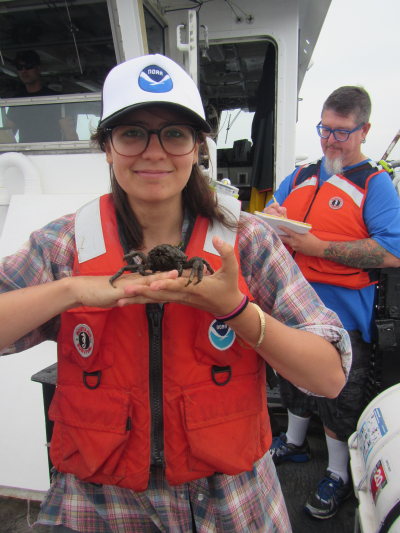
Hello! My name is Bobbi Bevacqua and I spent summer 2019 at the Milford Laboratory helping the GoPro team investigate how fish are using shellfish aquaculture gear in Long Island Sound. In addition to helping in the field on the Research Vessel Victor Loosanoff, I took a closer look at videos from 2018 to see if we could detect a relationship between oyster harvesting sound and fish abundance. This experience was a great way to apply my creativity and problem solving skills when developing a reliable methodology, as well as sharpen and apply my “R” and statistical skills, all while immersing myself in an unfamiliar ecosystem surrounded by wonderful NOAA employees. This scholarship gave me an opportunity to grow my independence and confidence in general by challenging me to form my own connections within NOAA and seek my own housing to ultimately live alone in an unfamiliar town. Here is a picture of me taken by my mentor, Renee Mercaldo-Allen, on the Loosanoff, holding a spider crab that was hitchhiking on one of our oyster cages in August 2019. The second photo was taken by fellow Hollings scholar Rachel So and shows me crouching on deck waiting to put a quadrat on an oyster cage so that we can quantify what types of algae and other creatures are growing on the cages.
Kayla Rexroth
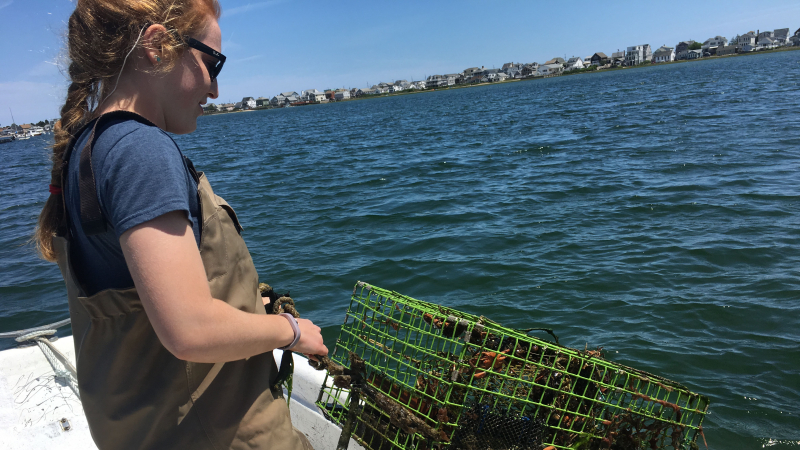
I’m Kayla Rexroth, a NOAA Hollings scholar class of 2020 and biology major with minors in earth science and chemistry at Salisbury University. I interned at the Wells National Estuarine Research Reserve this past summer in Southern Maine. Under the mentorship of Jason Goldstein, I worked on detecting and measuring the amounts of eDNA (environmental DNA) that green crabs emit into the surrounding water column and underlying sediment. My work days consisted of a perfect balance between field and lab work. Some days I was able to spend out on the water deploying crab traps while others were spent in the lab setting up my experiment. This experience helped me gain confidence in research as well as knowledge in lab and field skills. I have also gained so many connections through this experience and now have more confidence as I approach the application process for graduate school. The Hollings Scholarship application process may be a little daunting at first, but I can promise you the experience is totally worth it!
Paola Santiago
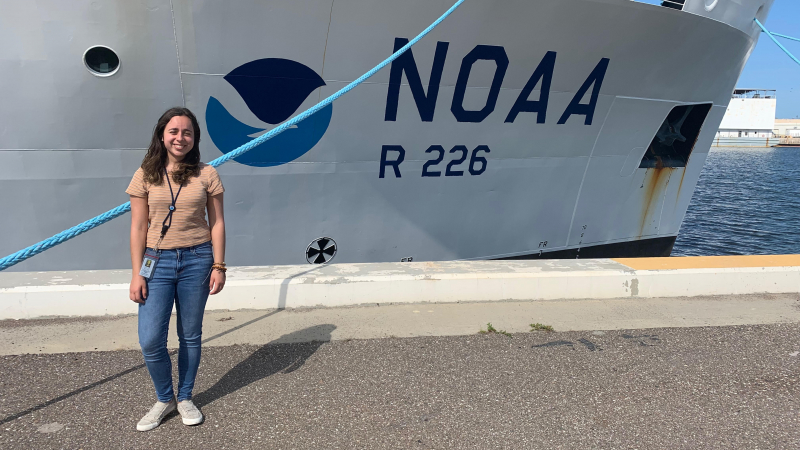
Hola from Puerto Rico! My name is Paola Santiago, a class of 2019 EPP/MSI scholar and a biology undergrad from the University of Puerto Rico, Rio Piedras. Did you know that less than ten percent of the deep ocean has been explored? This past summer I interned at NOAA’s Office of Ocean Exploration and Research at NOAA headquarters in Silver Spring, Maryland. I studied the spatial distribution of the deep sea coral Lophelia pertusa in the Southeast region of the U.S. In the deep ocean, the presence of this coral is important due to its stony structure, which contributes to the formation of huge mounds, creating deep sea coral reefs. I used bathymetry data collected from past expeditions and worked with live data feed coming from the NOAA Ship Okeanos Explorer and dives made from remotely operated vehicles. I had the privilege to meet many incredible scientists that make the vessel expeditions possible. I also observed live feed from the Windows to the Deep 2019 expedition, where samples were taken during the expedition, and had the opportunity to tour the vessel. In addition, I had the opportunity to travel aboard the NOAA Ship Pisces fisheries survey vessel, attend Capitol Hill Ocean Week, and present my project to the Office of Ocean Exploration Advisory Board. All these experiences further inspired me to pursue graduate studies in oceanography where my research will focus on species distribution and deep sea exploration. This summer internship has been, without a doubt, an extraordinary experience. In the world of deep ocean exploration, there is still a lot to be explored — are you ready to apply to the EPP/MSI undergraduate scholarship and help explore the other 90 percent?
Laura Anderson
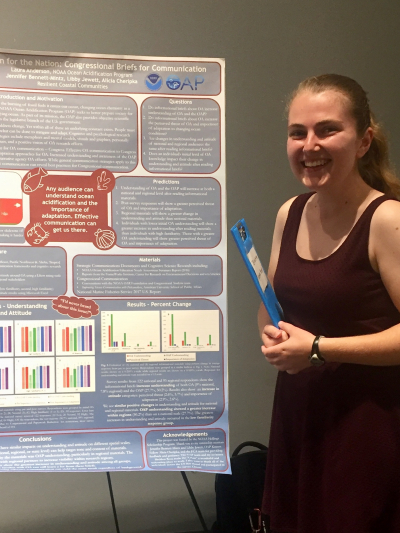
Can you say ocean acidification five times fast? My name is Laura Anderson and I spent this past summer working with the NOAA Ocean Acidification Program (OAP) in Silver Spring, Maryland. My project focused on communicating science to Congress, so being a short metro ride away from downtown Washington, D.C., was perfect! Throughout the summer, I got a chance to create materials for a Congressional audience, develop my writing and graphic design skills, get to know the incredible folks at the OAP, and learn from communication and policy experts. I’m hoping to present my results at the American Geophysical Union Ocean Sciences and American Association for the Advancement of Science meetings next February (thanks for the conference funding, Hollings Scholarship!) and will apply the lessons I learned this summer to a master’s degree in environmental communication. I actually only learned about the Hollings Scholarship program a few weeks before the application deadline — so grateful that I was able to apply and have this amazing experience!
September 2019
Brooke Travis

I’m Brooke Travis, and I’m here to say that my internship in Seattle, Washington, with NOAA’s Hollings Scholarship was the best summer experience I have ever had! I collaborated with the United States Geological Survey (USGS) and NOAA to develop two new molecular assays for Nuclear Inclusion X (NIX), an infectious disease in razor clams. I've mastered DNA extractions, qPCR, and regular PCR (all important lab techniques of molecular biology), and even dabbled in histology. I came out of this internship prepped for graduate school and excited to continue adding new scientific knowledge to the books. The mentors all want to see you succeed and the friends you make will be friends for life. Apply for the Hollings Scholarship! It's an experience you won't forget.
Brianne Visaya
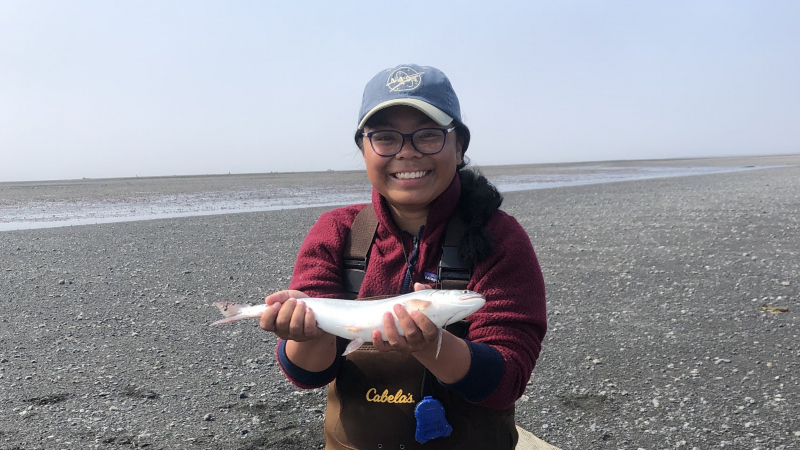
Hi everyone and welcome to #TakeoverTuesday! I'm Brianne Visaya, a class of 2018 NOAA Hollings scholar and civil and environmental engineering undergraduate at San Jose State University. I'm also a community college transfer student from Los Medanos College! This summer, I had an amazing opportunity to work at the Kasitsna Bay Lab in Kachemak Bay, Alaska. During my internship, I conducted coastal margins fieldwork, took part in physical oceanography surveys, monitored black oystercatcher populations, and so much more with teams and organizations around the area. My research focused on creating Esri story maps on benthic habitat mapping, sea star wasting syndrome, fjords, and research studied in Kachemak Bay. These story maps were developed as initial tools to communicate about the Bay’s ecosystem and the changes it is experiencing. I'm so grateful to the NOAA Hollings Scholarship Program and my mentor, Kris Holderied, for fostering the opportunity to explore Alaska's wilderness.
True Furrh
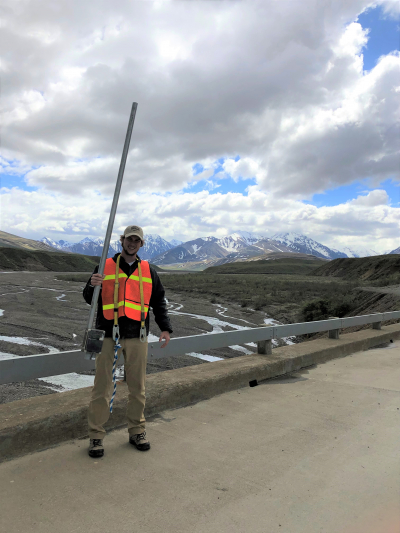
Hi, y'all! I'm True Furrh, a 2018 NOAA Hollings scholar studying environmental sciences and civil engineering at the University of Houston (Go Coogs!). Growing up in coastal Texas, my life has been shaped by storms and flooding from Hurricanes Ike and Harvey, and seasonal riverine events, so working on a flood modeling project was a perfect fit. I interned at the National Weather Service Fairbanks Weather Forecast Office in Interior Alaska and ran computer models to predict small-scale flooding from the Chena and Tanana Rivers. I primarily used ArcGIS and HEC-RAS, two software programs used to analyze geographic information, but also got the chance to look through historical flood events in the region and talk with local emergency managers. The highlight of my summer was installing a few river gauges in Denali National Park with my mentor, Karen Endres, Senior Service Hydrologist for the Fairbanks Weather Forecast Office, and Ed Plumb, Warning Coordination Meteorologist. Combining my personal flooding experiences with an applied research experience made for an incredible summer, and living in Alaska was a dream come true. Sophomores, I can't encourage you enough to apply for the Hollings Scholarship — start your application now! It will change your life, and it reaffirmed my desire to attain a graduate degree and pursue federal employment or another applied research position.
Ayanna Butler
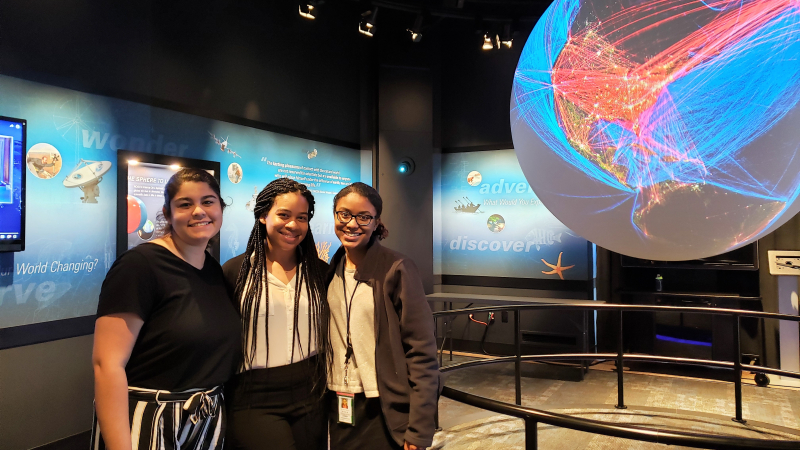
I’m Ayanna Butler, here for the first day of #TakeoverTuesday! Through NOAA’s Educational Partnership Program with Minority Serving Institutions (EPP/MSI) undergraduate scholarship program, I had the opportunity to intern with NOAA’s Satellite and Information Service (NESDIS) at their Environmental Visualization Lab (VizLab) in Silver Spring, Maryland, this past summer. At the VizLab I learned about satellite imagery and the importance of data collection by using the NOAA GeoPlatform offsite link, a tool that provides geospatial data, maps, and analytics in support of NOAA’s mission. I also cultivated many relationships during my time at NOAA! I made connections with people who have presented me with graduate school opportunities as well as opportunities for the rest of my school year. After interning this summer I have decided to pursue a master’s and Ph.D. in environmental science. If you’re interested in this scholarship opportunity, I encourage you to apply. The connections you will make will last a lifetime!
Laura Anthony

Didn’t think looking for trash could be exciting? Think again! I’m Laura Anthony (second from the right), a 2018 Hollings scholar and a marine biology major at Western Washington University. Physically, I spent this summer in Silver Spring, Maryland, at NOAA headquarters, but mentally I was immersed 1,000 meters under the Atlantic! With the help of the trusty remotely operated vehicle (ROV), Deep Discoverer, and the amazing Deep Sea Coral Research and Technology Program team, I looked through images and videos of deep-sea corals and sponges to find evidence of human impacts (yes, mainly trash). Though it was disheartening to see balloons entangled in these beautiful organisms, I am comforted by the fact that my images and data will go to the public to show us that our trash does not just disappear. My internship opened the door to several opportunities, such as touring the Okeanos Explorer with fellow interns, and even being invited on a deep-sea coral and sponge ROV habitat survey in the Olympic Coast National Marine Sanctuary. My favorite part of the internship, besides working with my amazing mentor Heather Coleman, was spending time watching the live video stream from the Okeanos in the Exploration Command Center in Silver Spring. I witnessed stretching fields of deep-sea corals (check out the author on that link!) and even a shark feeding frenzy after a dead swordfish fell to the seafloor! I am currently applying to graduate programs in deep-sea coral biology, so you could say my path to study deep-sea corals was brilliantly illuminated by Deep Discoverer!

